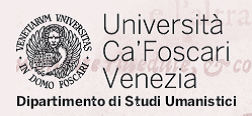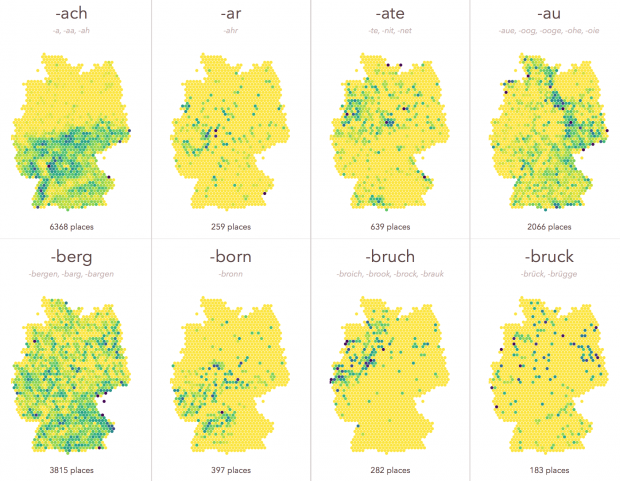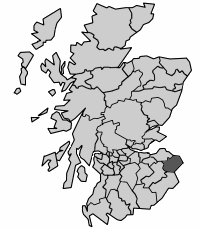http://www.sies-asso.org/appels/appels-a-communications/1683-nomina-sunt-l-onomastica-tra-ermeneutica-storia-della-lingua-e-comparatistica
Nomina sunt…?
L’onomastica tra ermeneutica, storia della lingua e
comparatistica
 Giornata di studi, Venezia, 3-4 marzo 2016
Giornata di studi, Venezia, 3-4 marzo 2016
Università Ca’ Foscari Venezia, Dipartimento di
Studi Umanistici
Dottorato di Ricerca in Italianistica
Deadline extended: January 17th
«Cuatro días se le pasaron en imaginar qué nombre le pondría».
Cervantes, Don Chisciotte
Fin dalla loro comparsa gli studi di onomastica, spesso coadiuvati
da quelli filologici, hanno dimostrato la loro vitalità ed efficacia per una
comprensione più profonda delle opere letterarie, dei loro autori e del loro
contesto, senza dimenticare l’apporto alle discipline storico-linguistiche e
glottologiche, nelle quali, per esempio, la cristallizzazione di una forma
arcaica in un toponimo o in un antroponimo si rivela fondamentale per stabilire
la cronologia evolutiva di un volgare.

Scorrendo diacronicamente la storia della letteratura italiana, in
lingua e in dialetto, si possono individuare tre opzioni principali (a volte
compresenti in uno stesso testo) riguardanti i nomi propri: reticenza, medietà
e semanticità esplicita. La prima può portare l’autore a scegliere l’anonimato
per i propri personaggi o per i luoghi in cui si svolge la storia (pensiamo al
protagonista dell’Enrico IV di Pirandello, indicato solo con tre asterischi, o
ai non-luoghi del Processo kafkiano), oppure a volerne proteggere l’identità
reale tramite schermature (come nei senhal due e trecenteschi, negli anagrammi,
o nei cambi trasparenti come la Regalpetra di Sciascia, mutuata da Racalmuto);
la seconda fa privilegiare scelte ‘comuni’ che consentono di tratteggiare
caratteristiche non stereotipate: personaggi dai nomi semplici, come Tom Jones
o Pietro Rosi, o città e paesi realmente esistenti e ordinari; infine, la terza
invita esplicitamente il lettore a interrogarsi sul significato dei nomi
stessi: Dedalus in Joyce e, per i luoghi, Maradagàl in Gadda e Macondo in
Marquez.
Un caso particolare è rappresentato dai nomi propri di persona fatti
oggetto di critica o persino denuncia, celati o messi in chiaro, comunque
determinanti la natura di tutto il testo: la loro presenza può aver indotto
l’autore a evitarne la circolazione (come fece Ariosto con le proprie Satire)
oppure la pubblicazione ne è il primo obiettivo, ma può restare inattuabile (è
il caso del celebre articolo di Pasolini sulle stragi).
Un discorso di altra natura meritano invece i nomi comuni, che possono
fornire spunti d’indagine sulla poetica di un autore (a seconda delle diverse
sfumature che uno stesso termine chiave può assumere) o alla storia della
cultura e del costume (nomi astratti come ‘gentilezza’, ‘classe’ o ‘nazione’ si
fanno portavoce di Weltanschauung che la letteratura sa raccontare con
efficacia). Rientrano in quest’ambito anche i neologismi e le primi
attestazioni di una parola, ma anche quelle «parole perdute» con l’avvento
della nuova età industriale, di cui parla Beccaria nel volume I nomi del mondo.
Quanto detto finora sui nomi parlanti, che racchiudono in sé le prerogative, le
virtù o le azioni dei personaggi cui sono applicati, è valido anche per
l’antichità classica: si pensi a Telemachos, «colui che combatte da lontano», o
a Phrasikleia, la giovane defunta «che mostra il kleos» del celebre epigramma,
o ai protagonisti delle commedie greche e latine.
Un altro filone di ricerca
approfondisce le intersezioni dell’onomastica con gli studi di comparatistica,
che permettono di raffrontare i casi italiani con le tendenze europee, e di
traduttologia (come non perdere significati e allusioni nel passaggio da una
lingua all’altra? Accade, ad esempio, con The Importance of Being Earnest).
Ancora diverso è il caso del nome che l’autore può inventare per sé, quando
esso diventa cruciale per la composizione dell’opera: alle eteronimie di
Pessoa, ad esempio, corrispondono testi sorti da stati diversi dell’‘io’ e
dunque da differenti modalità creative. Anche l’uso di pseudonimi modifica in
modo irreversibile il rapporto dell’autore col proprio testo e col potenziale
lettore, e può fornire utili indicazioni storico-culturali e sociologiche.
La
giornata di studi si rivolge a dottorandi e giovani ricercatori (entro 5 anni
dal conseguimento del dottorato) di letteratura e filologia greca, latina,
romanza, italiana e di letterature comparate; sono ammessi interventi in lingua
italiana e inglese, della durata di 20 minuti. Entro la fine del 2016 gli atti
del convegno saranno pubblicati in formato digitale presso Edizioni Ca’
Foscari.
Si prega di inviare:
- il titolo della proposta seguito da un abstract
di max 500 parole non firmato;
- una breve nota bio-bibliografica (max 500
parole).
I due file andranno spediti all’indirizzo
onomastica.cafoscari@gmail.com entro il 17 gennaio 2016. Poiché le proposte saranno valutate in forma anonima, si raccomanda di non
specificare il nome del proponente nel file che contiene l’abstract. Gli esiti
della valutazione saranno comunicati via email entro il 25 gennaio 2016.


























